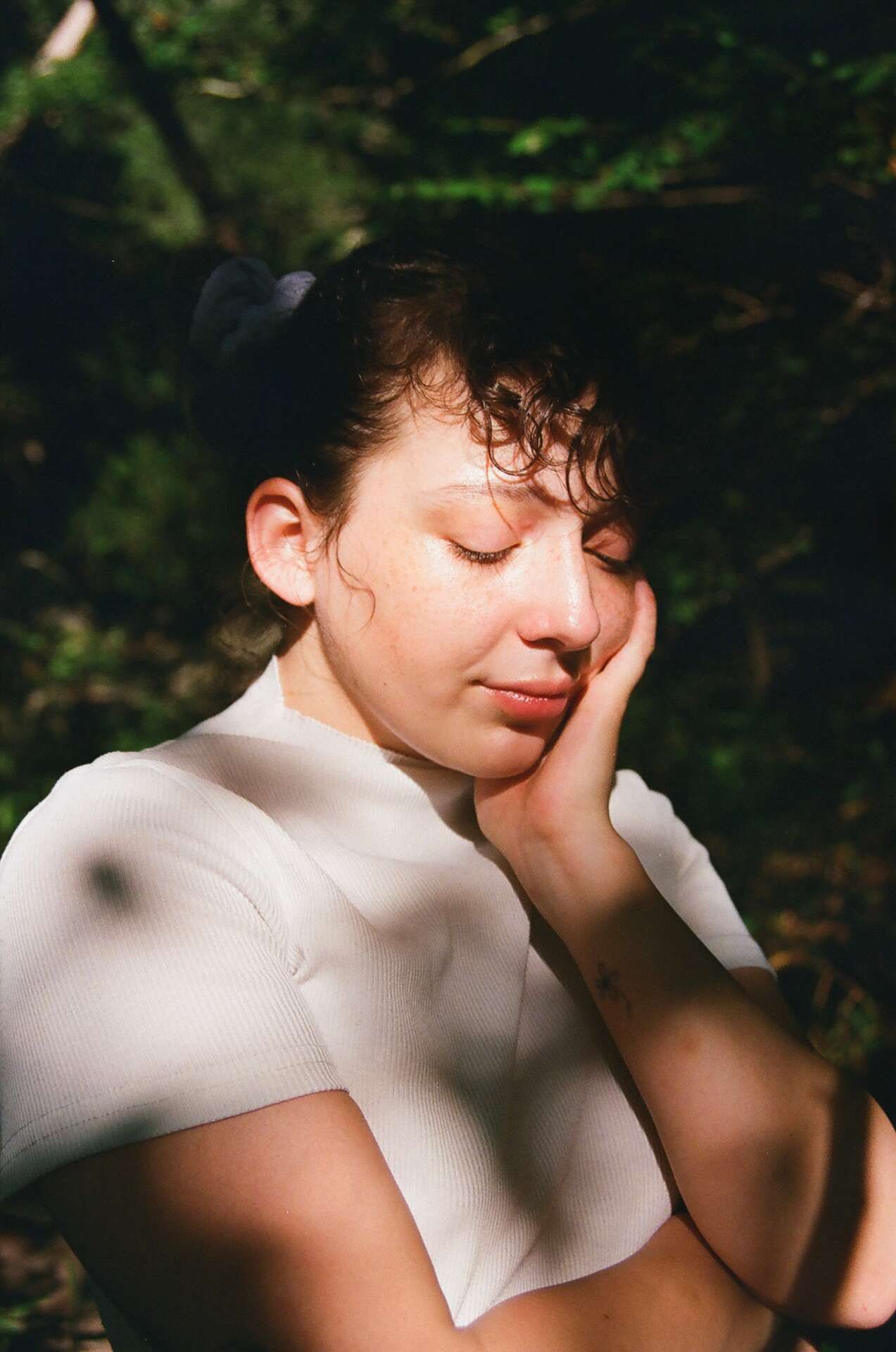We were lucky to catch up with Sonja Bierschenk recently and have shared our conversation below.
Sonja, looking forward to hearing all of your stories today. How did you learn to do what you do? Knowing what you know now, what could you have done to speed up your learning process? What skills do you think were most essential? What obstacles stood in the way of learning more?
I first learned photography on a 35mm film camera in my high school photography class. Back in 2014 my teacher, Ms. Rose, taught us the mechanical basics of photography via pinhole cameras made from old shoe boxes, duct tape, and photo paper. I began taking photos of myself, leaning into my awkward teenage angst by capturing poses I thought were unique. I learned to photograph my peers and found my favorite subject, my twin sister. We set up photoshoots together and alternated in front of the camera, taking inspiration from the Tumblr era. Learning to use a manual camera took me years to master, but beginning like this gave me a secure grasp on the basics and I think this contributes greatly to my current style and photography interests. I owe my photography career to my teacher, Ms. Rose, who introduced me to pop culture staples like the Gorillaz and the movie Exit Through the Gift Shop featuring street artist Banksy. She still comments on my Facebook posts, giving me hope that my work can reach through generations and showcase film photography in a new and explorative light.




Sonja, love having you share your insights with us. Before we ask you more questions, maybe you can take a moment to introduce yourself to our readers who might have missed our earlier conversations?
In 2019 I opened my photography business and began focusing full-time on my craft. I started shooting senior portraits and graduation photos for students at my university, VCU. I loved connecting with my peers and being a part of their celebration, my first few clients helped me establish how I would come to run my business. Right now booking with me involves a contact form from my website with questions about location/date/occasion, then I reach out and set up a time for myself and the client to talk on the phone or meet in person. Talking about the shoot beforehand is vital for me to understand what my client wants and to establish clear expectations about what the client will receive. If the fit isn’t right, I’m always happy to recommend another photographer in the area, I believe in collaboration with others in my field over competition. When shooting film it’s important to me that the client understands the fragility of film, with 36 photos in a roll I am proud that I can deliver about 30 film photos. Creative portraits have been my primary focus for the past few years, but in 2022 I shot my first solo wedding and assisted other photographers with weddings. My first wedding clients were amazing and I am so grateful to them for taking a chance on me, I did 2 engagement shoots prior to their wedding and then shot film and digital on the day. In the coming year I want to focus on booking weddings with digital and film. I want to connect with couples looking for a non-traditional experience, who want memories, candids, and wedding photos that are truly art. In my opinion, black and white film wedding photos are the most beautiful way to capture love.
What can society do to ensure an environment that’s helpful to artists and creatives?
I am lucky to live in Richmond, Virginia, where our community values artists, creatives, and makers. The creative communities here are unlike any I’ve seen elsewhere. From seasonal markets and small businesses to community events, the people here care about local small businesses. I have been able to make connections with other photographers by joining a film club for film photographers, going to local meet ups for photographers and models, and by working for other creatives to help capture their work so they can sell handmade products online. I think that community thrives here partially because of VCU, which is nationally ranked for our art schools and attracts open minded students. We also have the Visual Arts Center, a community center for artists of all kind to learn and practice, the Altria Theater, and other performing arts centers. In my opinion, the best way to support artists is to talk to them, buy their work, inquire about their creative process, and choose local businesses over chains.




What do you find most rewarding about being a creative?
Happy clients are the reason I’m a photographer. If my clients weren’t overjoyed seeing their photos, if they didn’t gush to me about how I captured them, if they didn’t absolutely love my work I wouldn’t photograph. Finding clients that like my vintage style, photojournalistic approach, and my love of photos that aren’t “perfect” is what fuels my business. Not everyone is a good match for me, and that’s why it’s so important to talk beforehand. If someone wants me to change my style, or asks for photos that are not in my wheelhouse, I am so happy to recommend another photographer rather than pushing through with something that isn’t going to make either of us happy.
Contact Info:
- Website: https://www.sonjabierschenkphotography.com
- Instagram: https://www.instagram.com/sonjab23/
- Facebook: https://www.facebook.com/sonjabierschenkphotography
- Twitter: https://mobile.twitter.com/sonjabee23
Image Credits
First photo of me is by Michael Betzner.


